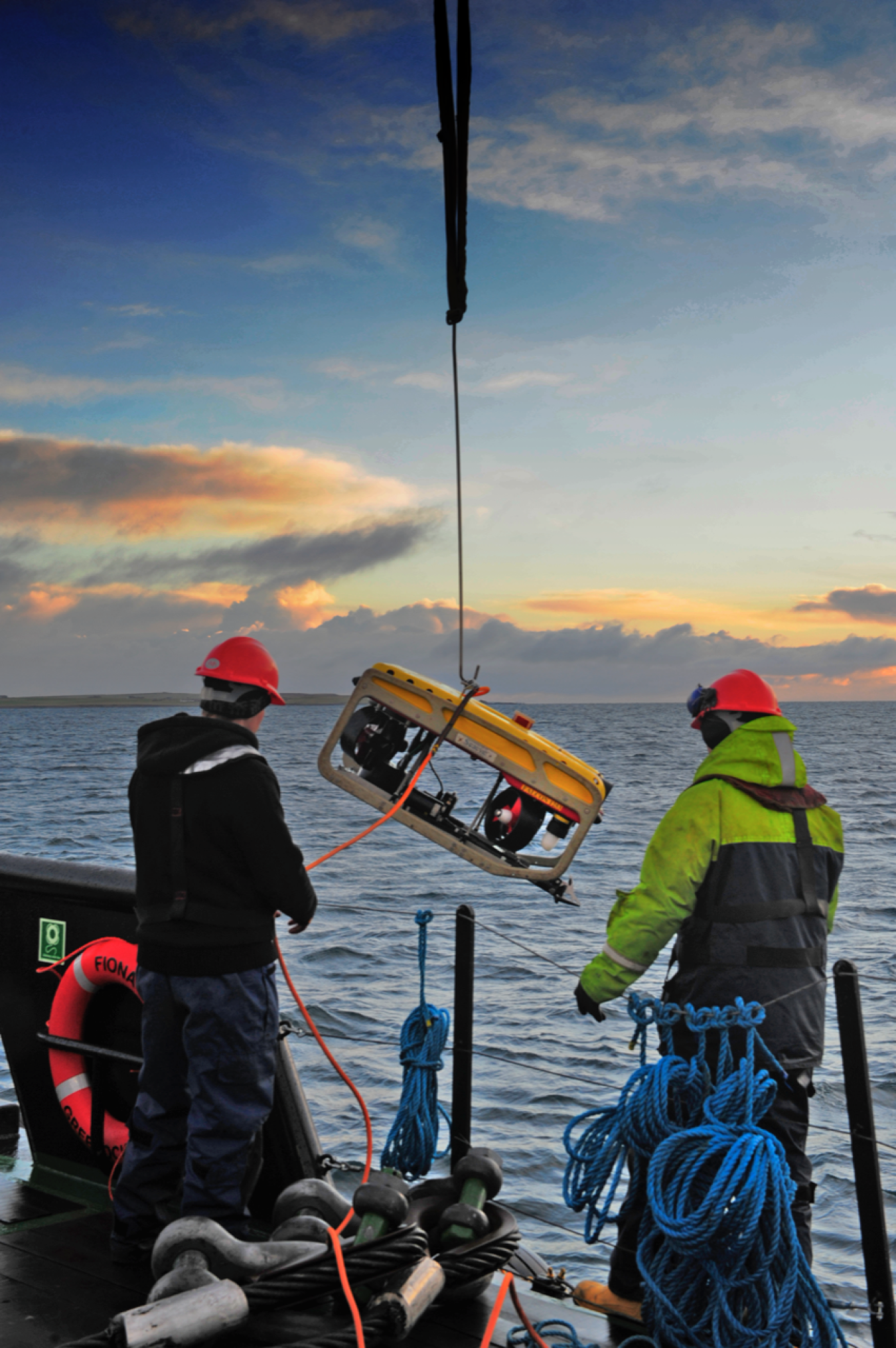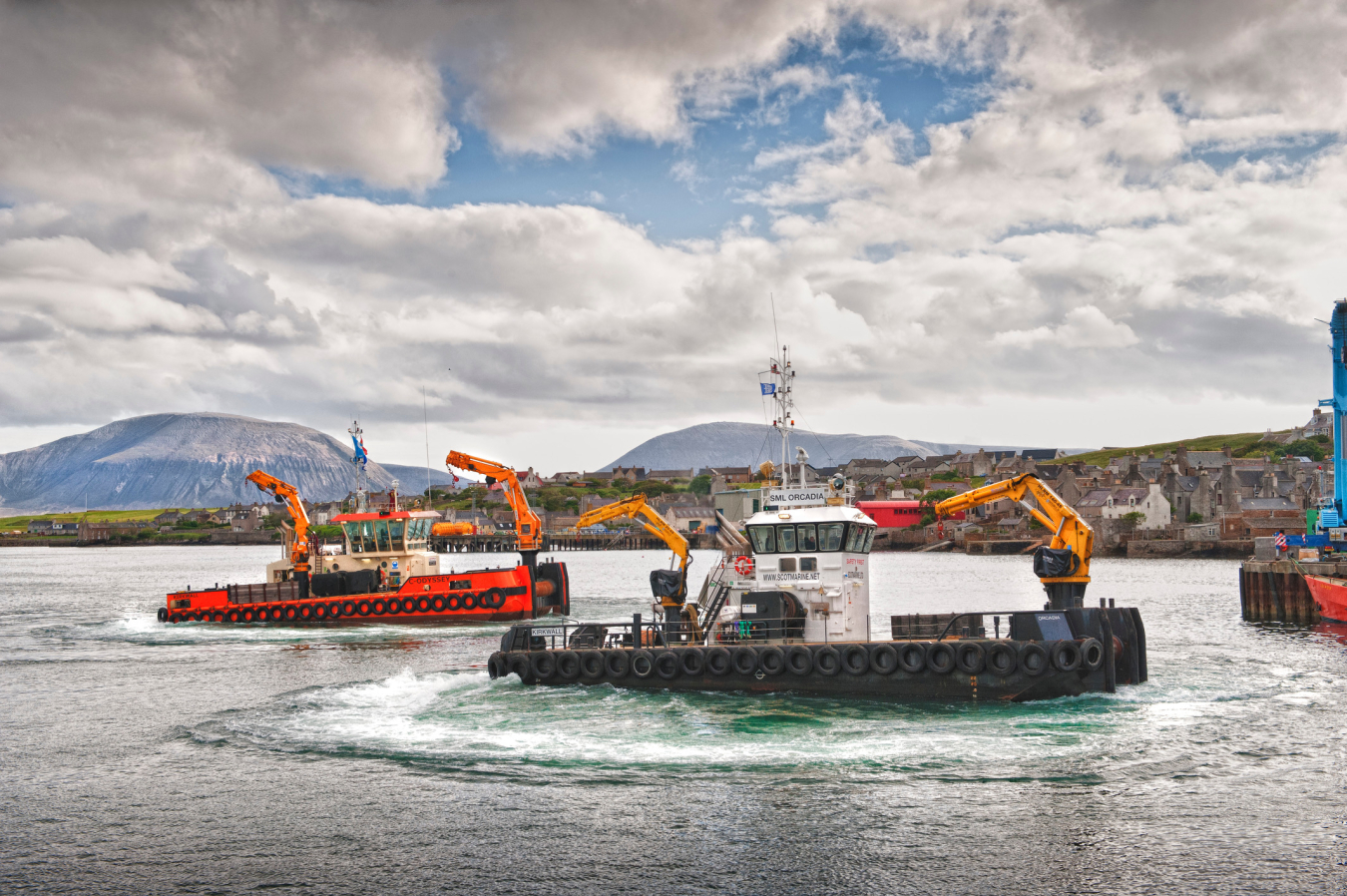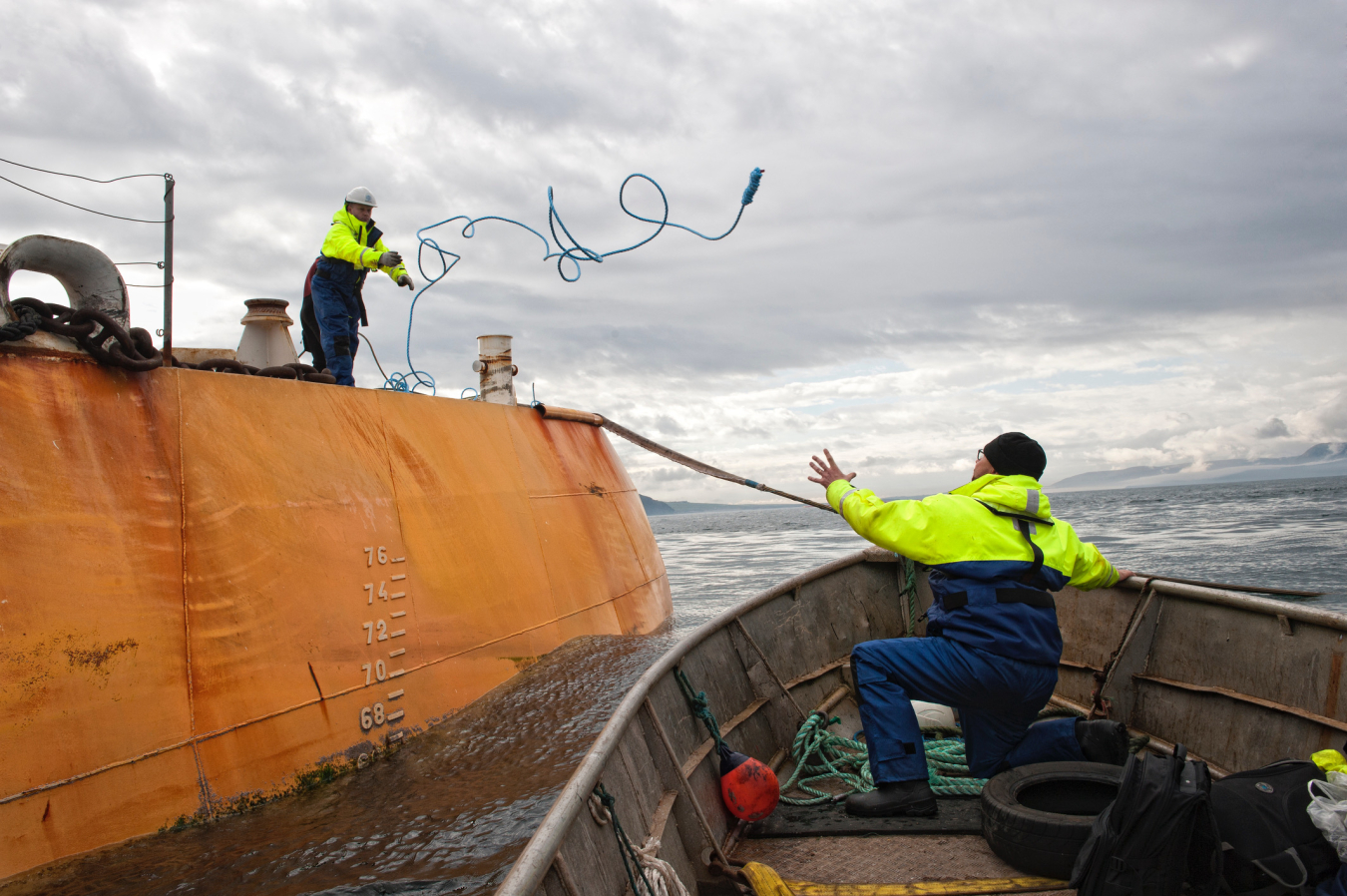A view of Oregon's upcoming marine and hydrokinetic energy test facility from a European perspective.
Water Power Technologies Office
February 5, 2018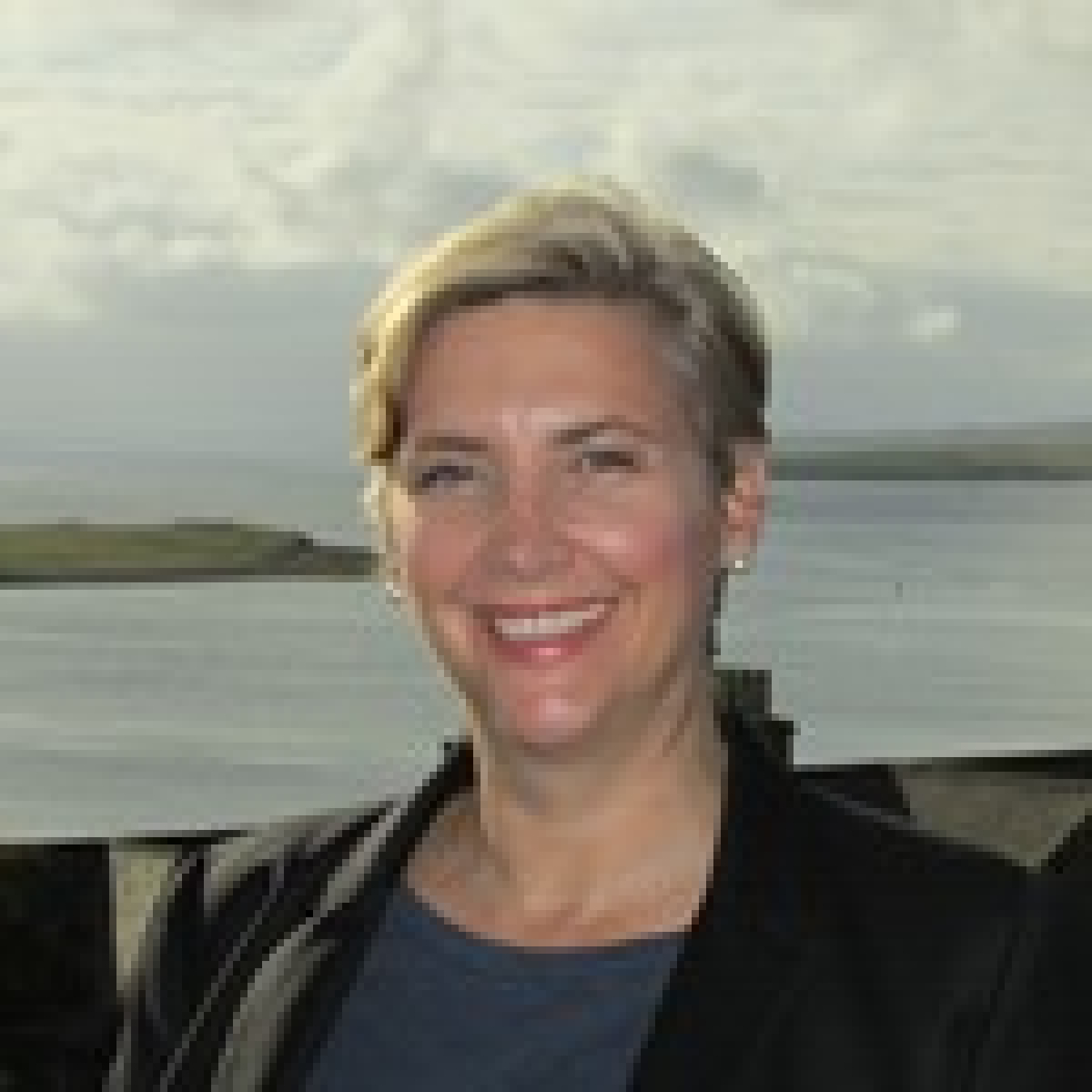
Elaine Buck

Gareth Davies
In December of 2016, the Energy Department announced the award of up to $35 million in funding for the construction of the Pacific Marine Energy Center, South Energy Test Site (PMEC-SETS). In anticipation of the test facility becoming operational after Fiscal Year 2020, the Water Power Technologies Office (WPTO) is conducting early engagement with various PMEC-SETS stakeholders and the marine industry to examine possible connections between marine energy and coastal economic development. The breadth of contributions from the various partners involved in establishing the test site and their unique viewpoints will further broaden public awareness of marine energy’s role in the local economy.
The following article represents a key part of a series of stakeholder-based interviews that WPTO is conducting. Miles Hall, WPTO’s Stakeholder Engagement Specialist, sat down with Elaine Buck from the European Marine Energy Center Centre (EMEC) and Gareth Davies from Aquatera Ltd to get their opinions on the state of PMEC-SETS and the Oregon coast economy, as well as on the global marine energy industry. Both EMEC and Aquatera Ltd are partners of PMEC-SETS.
Elaine Buck is a Technical Manager who manages the project team responsible for wave and tidal developer research and development (R&D) projects at EMEC. In her time at EMEC, she has worked and delivered on key European-funded projects and actively works alongside developers to support their technology development programs.
Gareth Davies has worked as an environmental consultant for over 20 years. Since founding environmental consulting firm Aquatera Ltd in 2000, Gareth has been deeply involved in the development of the marine renewables industry in Scotland. In addition to leading and participating in many of the 100 or so studies that Aquatera has completed in this sector, he is an active member on the board of the Scottish Renewables Forum where he co-chairs the Marine Group, participates in the Marine Grid Group and chairs the board of the Orkney Renewables Forum. Gareth is also currently a member of the Marine Energy Group established by the Scottish government.
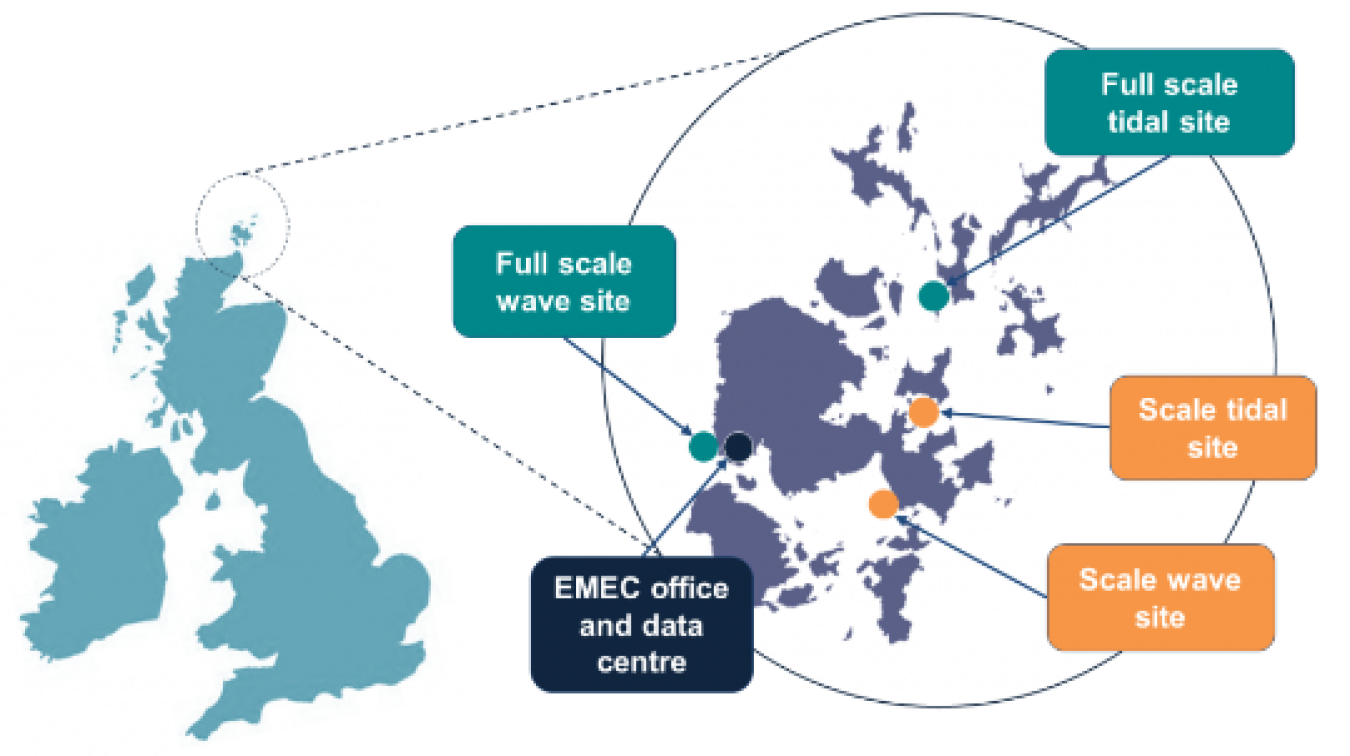
Please tell us a little about the European Marine Energy Centre.
Elaine: EMEC, located on the Scottish island of Orkney, was founded in 2003 and is the first marine test site in the world to be dedicated to wave and tidal technology testing. We provide a suite of consultancy services across the globe with other test centers in Asia, France, the Netherlands, Spain, and now with the recently funded PMEC-SETS.
EMEC is home to four distinct test sites, two of which are full-scale wave and tidal centers at Billia Croo and at the Fall of Warness, respectively. We also have two scaled test sites for both wave and tidal testing in the Scapa Flow and in the Shapinsay Sound. Billia Croo houses a near-shore berth suitable for shallow water projects as well as five cabled test berths in up to 70-meter water depth located approximately two kilometers offshore. Additionally, a near-shore berth is situated closer to the substation for shallow water projects. On the tidal side, EMEC offers eight tidal test berths at depths ranging from 12–50 meters in an area two kilometers across and approximately four kilometers in length.
We have a test laboratory accredited by the United Kingdom Accreditation Service (UKAS) that follows the International Organization for Standardization (ISO/IEC) specifications for testing and calibration competence, such as ISO/IEC 17025 and ISO/IEC 17020. These specifications confirm that EMEC can provide independent, internationally recognized verification on performance assessments for marine energy converters and verification of systems or subsystems.
How did EMEC became involved in the PMEC-SETS project?
Elaine: The Northwest National Marine Renewable Energy Center (NNMREC) requested our assistance to review prospective sites for their Oregon coast test facilities in 2012. We provided recommendations on regulatory process considerations and stakeholder engagement throughout the site selection process. Much of our expertise is based off of our own experiences looking for EMEC’s testing sites in Scotland.
How does PMEC-SETS compare with EMEC?
Elaine: Both EMEC and PMEC-SETS have the ability to test arrays as well as all known types of wave energy converters (WECs) but a major difference lies in the geography of the Oregon coast versus the Scottish coast. The energy density of Pacific Northwest waves is much more severe than in Orkney. EMEC estimates that annual wave power averages are almost double in the Pacific Northwest than on the Scottish coast. Testing and demonstrating a developer’s technology in such extreme environments suggests that these devices may be able to also find success elsewhere in the world.
What are the key lessons learned from challenges the EMEC test facility has faced?
Elaine: After an economic downturn in 2012 that caused many EMEC developers to shut down testing operations, EMEC found it needed to be proactive in providing a more holistic, hands-on support package throughout the testing process. The facility then established and supported several different marine energy funding programs, such as the Marine Renewables Infrastructure Network for Emerging Energy Technologies (MaRINET) program. MaRINET provided funding to cover many of the costs of access to EMEC’s test sites for wave and tidal energy conversion companies, subject matter experts, and research groups, and continues to be an important funding assistance program to help developers put steel in the water.
Based on your experiences in the UK, how do you think PMEC-SETS could affect the Oregon coast economy and the marine industry as a whole?
Gareth: Based on our estimations, we calculated that 1,000 jobs would be created per one gigawatt of deployment. There is a clear relationship between the capacity for energy and the subsequent demand for jobs.
Elaine: It’s also really important to keep in mind that there are significant economic implications for the supply chain, investments in hiring marine operators, and revenue generated by people in the local tourism and hospitality industries. We have over 400 visitors at EMEC every year, which generates a lot of money for the local economy.
Gareth: During the operation phase of PMEC-SETS, we estimate that about 100–150 jobs will be created through supply chain development up and down the Oregon coast. When EMEC was first being established, a competent marine industry workforce was already an embedded piece of the community. The same can be said about Newport, where there are a large number of people who make their livelihood off of the sea.
Do you have a sense of how interested local and global technology developers are in testing at PMEC-SETS?
Gareth: There are a number of things that might pull a technology developer to PMEC-SETS. If their technology is ready for large-scale testing, or if a developer is local, PMEC-SETS should stand out as an ideal location. Each of these developer groups require different incentives. Supporting EMEC on the small island of Orkney has made us acutely aware of the concept of being a local; you quickly realize that you are liable for everything you put into the community in which you work and live. PMEC-SETS has a chance to provide a low-risk investment pathway for the community, which is an opportunity to emphasize the value proposition of the facility in the long-run.
Elaine: To add to Gareth’s point, it is also invaluable to have ambassadors for the facility. Whether these people are locals, are based in the academic community, live on the east coast, or work abroad, it’s important that they can actively and persuasively speak about the benefits of the facility. Having a growing network of PMEC-SETS contacts is critical for attracting the attention of global developers.
PMEC-SETS is being designed and constructed by Oregon State University. When completed, PMEC-SETS will be a utility scale, grid connected, open ocean test facility located off the coast of Newport, Oregon. The site will be able to accommodate up to 20 WECs in four test berths at any one time. Each of the four test berths will have a dedicated transmission cable and the site will be pre-permitted for known WEC technologies. PMEC-SETS will enable technology developers to prove device performance in robust wave environments for extended periods of time; thereby, demonstrating technical viability, determining methods for cost reduction, and advancing technologies toward commercial readiness and cost-effective power delivery


